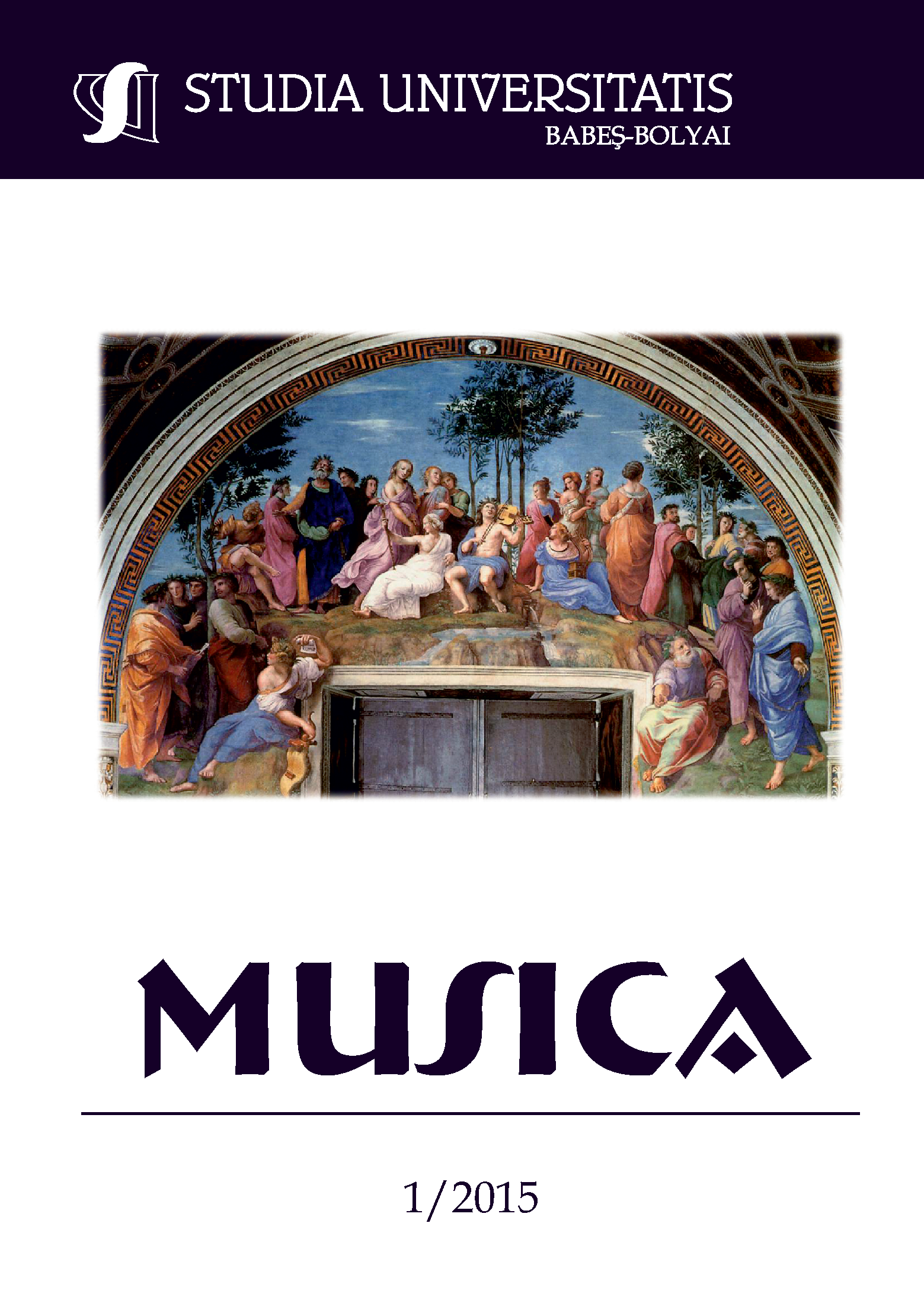NEOBAROCK ELEMENTE IN DAS KLAVIERWERK PAUL CONSTANTINESCUS
Keywords:
Original musical composition system, Originality, Elements of Byzantine music, Romanian folklore, Formal Neo-Baroque musical elementsAbstract
Paul Constantinescu started to design his musical composition system in his student years. He constantly and accurately observed this system during his entire lifetime. He resisted the avant-garde temptations of dodecaphony, serialism, Eastern music techniques, and so forth. He promoted originality, but not one based on extreme experiences. He advocated the sui generis originality rooted in the typically Romanian wisdom that respects and borrows from the experience of the Western culture, but does not amalgamate with it. The originality of Paul Constantinescu’s work stems from his choice to embody the values of the Byzantine melos and of the Romanian folk music in Western forms, tailored to the needs of the former. As a result, his work is remarkable for its clearly-defined, durable, and proportional formal structure. He does not reject the values and ideas of his Western antecessors. He does accept any compromise about the organization and the structure of the Romanian modal themes that he uses, either. Paul Constantinescu’s piano work is quite short in terms of duration (only 37 minutes of music), but extremely varied in its unity. It is intended for piano players of various ages and levels, in a similar way to Bach’s works. Paul Constantinescu conceived piano works of gradual difficulty both in terms of technique and style. This research paper aims to highlight Paul Constantinescu’s constant efforts to assimilate and apply the neo-Baroque elements of the Western musical composition techniques to the equally strong and healthy core of the Byzantine melos and of the Romanian folk music. His highly original approach to composition is based on finding correspondences, intersections, and coincidences between the two musical thinking systems.
References
Constantinescu, Paul, Despre „poezia“ muzicii (Über „die Poesie“ der Musik), Editura „Premier“, Ploiești, 2004 („Premier“ Verlag, Ploiești, 2004).
Ionașcu, Stelian Paul Constantinescu și muzica psaltică românesacă (Paul Constantinescu und die rumänische psaltische Musik), Editura Institutului Biblic și de Misiune al Bisericii Ortodoxe Române, București 2005 (Verlag der Rumänischen Institut der Orthodoxen Kirche, Bukarest, 2005).
Toduță, Sigismund, Formele muzicale ale Barocului în operele lui J. S. Bach (Die musikalischen Formen des Baroks in J.S. Bachs Werke), Vol. 1, 2, 3; Editura Muzicală a UCMR, București, 1969, 1973, 1978 (Band 1, 2, 3; Musikverlag der Komponisten und Musikwissenschaftlersverband Rumänien, Bukarest, 1969, 1973, 1978).
Tomescu, Vasile, Paul Constantinescu (Paul Constantinescu), Editura Muzicală a UCMR, București, 1967 (Musikverlag der Komponisten und Musikwissen-schaftlersverband Rumänien, Bukarest, 1967).
Downloads
Published
How to Cite
Issue
Section
License
Copyright (c) 2015 Studia Universitatis Babeș-Bolyai Musica

This work is licensed under a Creative Commons Attribution-NonCommercial-NoDerivatives 4.0 International License.






